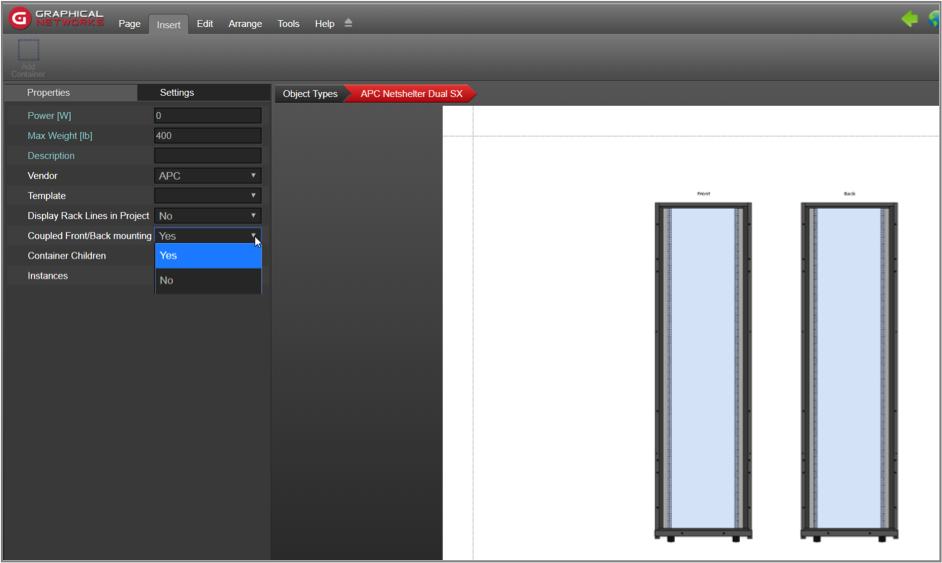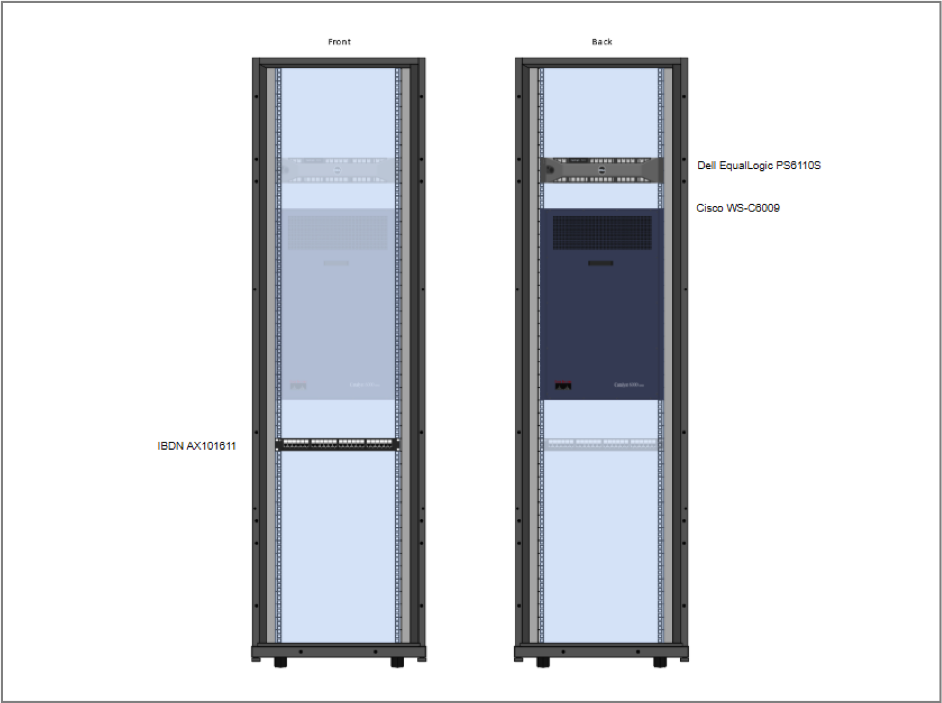
We have seen in previous blogs how you can model all kinds of racks in netTerrain, including racks showing front and back views. What’s new about this blog is that we’ll focus on these “dual view” racks (showing front and back), specifically racks where mounting devices on one side reserves (or blocks) usage on the other side.
Modeling dual view racks
Since netTerrain allows more than one container per rack model, you can easily model the front and back view of racks by simply creating two containers during the modeling process and assigning the proper attributes to each.
When creating rack models with front and back views, keep the following in mind:
- If possible, choose a background image that shows the rack frames for both views (like the image above).
- Use the same parameters for both containers (rack units, height and width).
- Take advantage of the arrange and resize buttons to ensure that both containers are of the same size.
The purpose of modeling racks with dual views is to be able to show and mount devices on both sides. To add some sizzle to your DCIM project, we provide two ways to model a dual rack in netTerrain: the “old” way (ordinary dual racks) and the “new” way, which is by coupling the front and the back.
In ordinary dual racks, all rack units are available on both sides: this means that the number of rack units available when the rack is empty, is the rack unit height times two. As we will see below, you can also design a rack to only allow rack units to be available on either the front or the back so that when you mount a device on one side, the same rack units become unavailable on the other. The latter is the more common usage in Data Center Infrastructure Management, since it better represents how Data Center managers utilize racks.
Coupled Front / Back mounting on dual racks
Once you have finished modeling the dual view rack you have the choice of having netTerrain display all the devices that you rack mount on one side and on the other side as well. This is called ‘Coupled Front/Back mounting’ (CFBM). CFBM comes in handy when you want to make sure that mounting devices on one side automatically prevents users from mounting devices that utilize any of those same rack units on the other side.
With CFBM, when you rack mount a device on the front, netTerrain will display a faint image of the device on the back and vice versa. That way, users already see from a graphical standpoint that those units are unavailable on either side of the rack. The image below shows a dual rack with CFBM enabled, with two devices mounted on the front and a patch panel on the back.
To enable CFBM on a rack, simply select ‘yes’ on the ‘Coupled Front/back mounting’ option in the modeler during the rack creation process.

